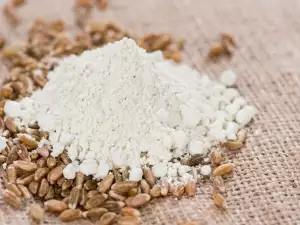Lentils are a legume seed and just a plant whose botanical name is Lens ensculenta. Lentils grow in the form of pods, each containing one or two seeds. Lentils are classified depending on whether their seeds are large or small. Known are dozens of varieties. While the most common types are either green or brown lentils, it can also be found in black, yellow and reddish- orange color.
It is believed that lentils appeared originally in Central Asia and have been used since prehistoric times. It was one of the first foods that were once cultivated. Seeds of lentils, dating back 8000 years, have been found in archeological sites in the Middle East. Lentils are also mentioned in the Bible. Before the first century AD, lentils were introduced in India, where they are used to make traditional, highly spiced dish known as Dahl. In many Catholic countries, lentils habe been used as a staple food during Lent. Currently leading commercial producers of lentils are India, Turkey, Canada, China and Syria.

Composition of lentils
They are an excellent source of molybdenum and folate. It is a very good source of dietary fiber and manganese and a good source of iron, protein, phosphorus, copper, thiamin and potassium. 1 cup of lentils, or about 198 g lentils contains 229 calories, 17.86 g protein and 0.75 grams of fat.
Types of lentils
The grains have a variety of sizes and colors that range from yellow to red-orange and reach brown and black. There are also green lentils. The most common and therefore the most inexpensive lentils are brown, also called Continental and Egyptian. It has less flavor than melts easily when cooking. However, this unpleasant disadvantage can be avoided by adding oil to the water.
Another very popular lentil is red. When subjected to heat treatment, it changes color to golden. It is characterized by a sweet flavor. Suitable for stews, soups and purees.
The most expensive lentils are representative of its green variety, also called French lentils. It is fleshy with a very intense flavor and remains firm even after cooking. This is ideal for the preparation of salads.
One of the most attractive varieties of lentils is beluga. So called because during cooking, the black shiny grains look like caviar.
Selection and storage of the lentils
Choose lentils that are not shiny and have no black spots. If the envelope is transparent, look for impurities and small worms and if you have not bought from this species before. Look at the envelope for their best before dates.
It is best for the lentils to be stored in an airtight container in a cool, dry and dark place. Stored this way, it remains stable for up to 12 months.
Culinary use of lentils

Lentils can be prepared in the form of soup, stew, with or without meat. Lentils and vegetable make patties, or some salads. The lentils can be used for filling of peppers and baked lentil stew in the oven is very tasty and useful as food.
In many countries, lentils are made mixed with rice. A Middle Eastern dish is the mujara, in which lentils are added to stewed in vegetable oil onions.
The taste of the lentils is complemented best by the anise spice and especially fennel. Traditional lentil soup is flavored with garlic and savory. Garlic is placed in the Scottish recipe for lentil stew, but it does add bay leaf too.
In a Moroccan soup called Hariri, lentils are combined with chickpeas, cinnamon, lamb, saffron and coriander. They can be mixed with the lemon juice, parsley, paprika and cumin. Lentil stew can be completely vegetarian or combined with chicken or pork.
Benefits of lentils
The lentil is a small but highly nutritious member of the family of legumes and is a very good source of substances that lead to lower cholesterol. Lentils not only help to lower cholesterol, but are particularly useful for high blood sugar levels because its high fiber content, allowing blood sugar levels to rise quickly after eating.
Contribution to heart health by lentils lies not only high in fiber but also significant amounts of folate and magnesium it contains.
The high fiber content in the lentils leads to supplying the body with energy in stabilizing blood sugar levels. The additional energy that the lentils provide increases from their high iron content.
Dangers of lentils
Lentils contain natural substances called purines, which are found in plants, animals and humans. In some individuals, who are susceptible to purine problems, excessive intake of these substances can cause health problems. Since purines can be broken down to form uric acid, excess accumulation of purines in the body can lead to excess accumulation of uric acid. Health problems associated with this excess is the formation of kidney stones from uric acid and the development of gout.


















Comments